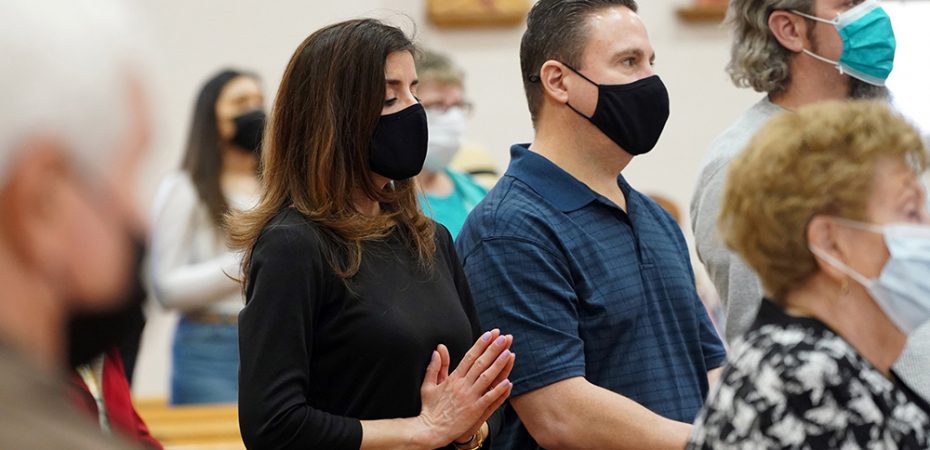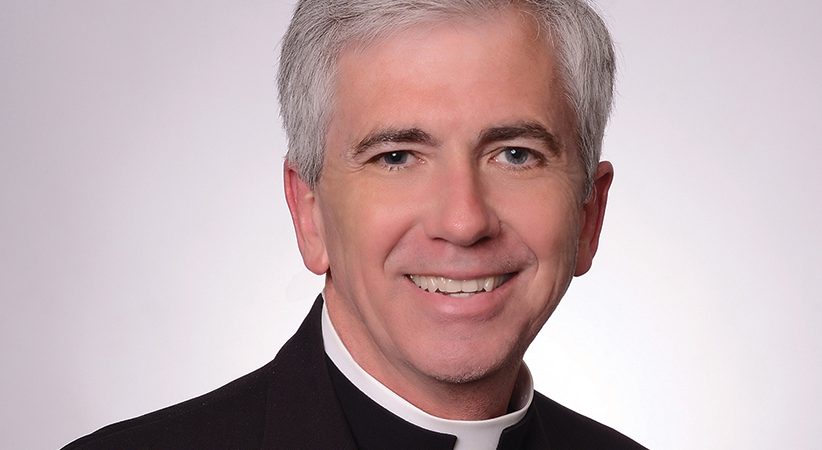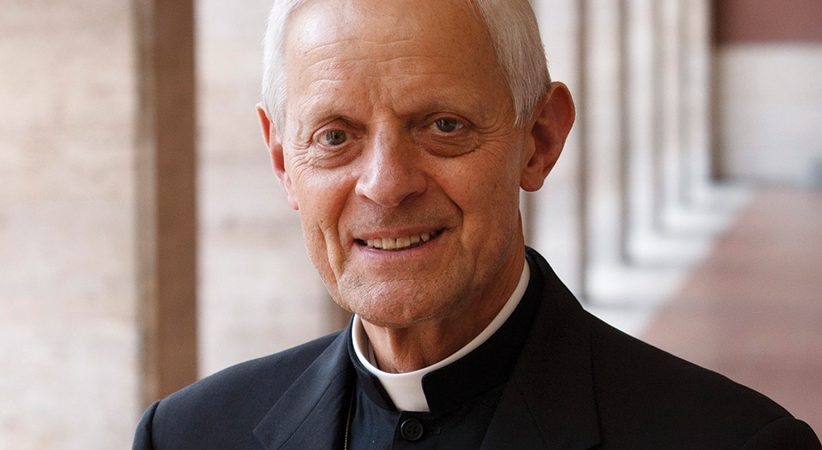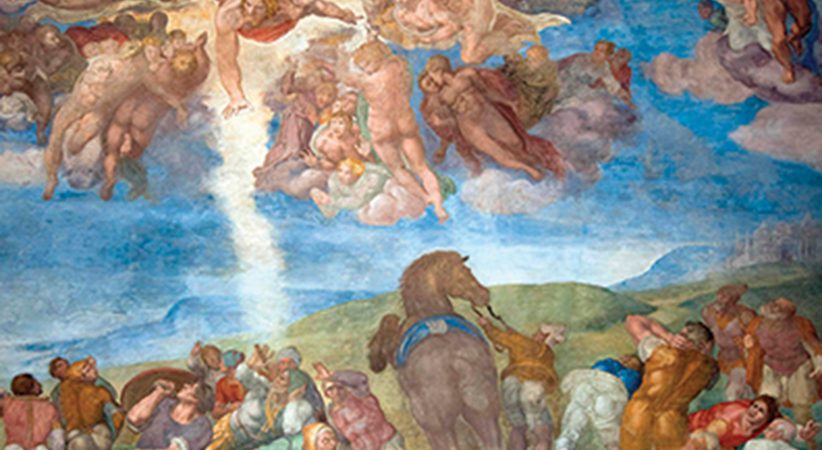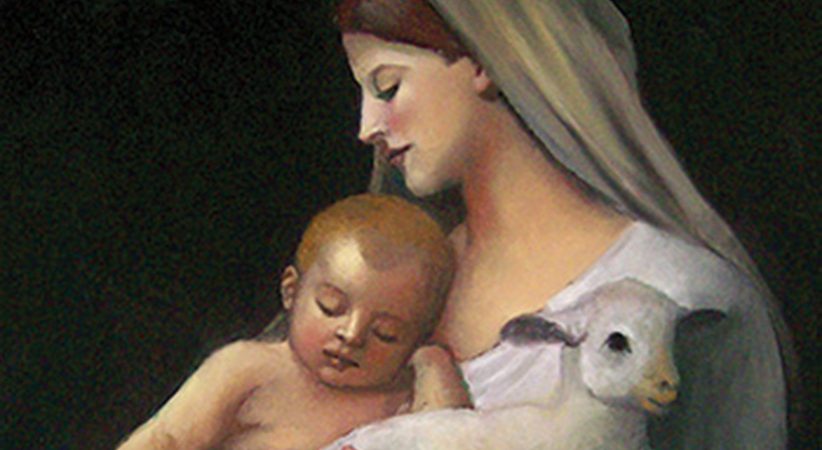The Mask
How a tiny piece of cloth can have so much power and influence
Father Patrick M. Carrion Comments Off on The Mask
 Halloween is around the corner. Last year, in many areas, there was no trick or treat. Everybody stayed home. This year, while all may be dashing door to door searching for the houses that give the best chocolate junk food (fruit not allowed!), it will be interesting to see if anyone is wearing a mask since the mask has taken on a new meaning around the globe. Where once a masquerade party was a place of intrigue and a ruse, it may be a long time before anyone throws a party stating, “Mask required.”
Halloween is around the corner. Last year, in many areas, there was no trick or treat. Everybody stayed home. This year, while all may be dashing door to door searching for the houses that give the best chocolate junk food (fruit not allowed!), it will be interesting to see if anyone is wearing a mask since the mask has taken on a new meaning around the globe. Where once a masquerade party was a place of intrigue and a ruse, it may be a long time before anyone throws a party stating, “Mask required.”
It is amazing how a simple cloth absorbs so much meaning and power. Last year, the mask was standard attire. Businesses distributed masks with their logos to employees. Nike, Amazon, Under Armour and countless famous brands could not make them fast enough; your face was a potential billboard for them. The mask was just part of the uniform — no different than navy blue pants and a white shirt with a clip-on tie with a school’s initials: You wore it, as it united you with everyone else. It was an equalizer even if only as a misery-loves-company theme, and you knew you were in good company. The mask was a unifier, symbolizing solidarity as the pandemic swept the world and the pan mask soon followed.
Being Church and living Church during the height of the pandemic was refreshing. Parishioners were grateful for the smallest and humblest of attempts to keep all connected, finding creative ways virtually to be a community.
In the beginning, laptops were on the altars, “Zooming” Mass to homes when no one could attend in person; they were thankful. Months later, it upgraded to a camera mounted on a tripod or the wall with remote settings and the parish’s own YouTube account.
Those with health concerns were grateful they could sit in the parking lot, attend Mass on their iPhone and receive Communion from the side door, all to be in communion with those inside fully masked. All were united, even though geographically separated, due to personal circumstances. It was a great year. The virus was a great unifier, the common enemy distracting us from what once divided us. The experience of being one and Catholic truly expressed the holy, which in turn highlighted the apostolic. The Church seized many of these graced opportunities, which were byproducts of the virus.
All good things come to an end too soon. Once the pandemic was perceived as waning (or for some, finally, confirmed as fake) the mask took on a different power. The unification quickly was ripped from the face of the Church. To wear or not to wear the mask became a political, ecclesiastical, social divide, wider and more divisive than the continental divide of the Americas or the Mason–Dixon Line (just a few miles from my parish). Like the Mason–Dixon line, which arbitrarily distinguishes the North from the South, the mask became a line, too, separated by Trump/Biden; CNN/Fox News; Democrat/Republican; extraordinary/ordinary form; vaccinated/ non-vaccinated.
History does repeat itself. The divides in the Church that St. Paul encountered in Corinth are the same today. “For it has been reported to me about you, my brothers, by Chloe’s people, that there are rivalries among you. I mean that each of you is saying, ‘I belong to Paul,’ or ‘I belong to Apollos,’ or ‘I belong to Cephas,’ or ‘I belong to Christ.’ Is Christ divided? Was Paul crucified for you? Or were you baptized in the name of Paul?” (1 Cor 1:11-13).
When civil jurisdictions lessened virus restrictions, some parishes lifted the restrictions that masks must be worn when attending Mass, while other parishes required it, or perhaps somewhere in between. Parishioners with health concerns no longer attended Mass as too many fellow parishioners took their masks off. Those who once felt it was safe to attend Mass no longer felt welcome to attend. We no longer were united by a uniform look.
When the enemy virus was retreating, the masses of people returned to their separate corners sans mask, allowing their true faces to be seen. The “pan-goodness” to wear a mask was eclipsed by a “my preference” attitude even while children under 12 were not able to be vaccinated or those with health concerns needed to feel that extra protection. The uniform was no longer worn as a symbol of unity. If a tiny piece of cloth can have so much power and influence woven into it, why can we not allow a tiny piece of bread to have this much power and influence in our lives?
FATHER PATRICK M. CARRION is the pastor of St. Ignatius of Loyola, Ijamesville, Maryland, and the director of Cemetery Management for the Archdiocese of Baltimore.

